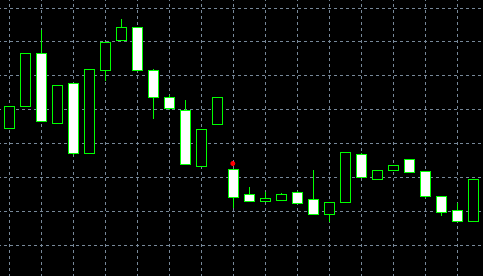The Kicking candlestick pattern can be either bullish or bearish and it is not necessary to be confirmed. This pattern looks similar to the separating candlestick pattern. However, the difference between these patterns is that the Kicking pattern shows a gap in the opening prices instead of their parity.
The bullish Kicking pattern is a black marubozu (a long black body with no shadow from one side) followed by a white marubozu (a long white body with no shadow from one side).
The bearish Kicking pattern is a white marubozu which is followed by a black marubozu.
Some Japanese analysts say that the price always moves towards a longer candlestick regardless of the trend. Besides, the trend direction is not important in this pattern unlike in other Japanese candlestick patterns.
How to distinguish the pattern?
1. A marubozu of one color is followed by a marubozu of another color.
2. There is a gap between two days.
Scenario and behavior of the pattern
The market was following a trend but the next day a price gap occurred. During that day the price never went back to the trading range of the previous day and then it closed with another gap.
Flexibility and transformation of the pattern
The Kicking pattern is not flexible. When there is no gap between trading days, the separating or continuation candlestick patterns are formed.
The bullish pattern is transformed into a long white candlestick which is considered as a bullish one.
The bearish pattern is transformed into a long black candlestick which is considered as a bearish one.
The similar patterns are the separating candlestick patterns. The difference is that the Kicking pattern shows no gap and it is a continuation candlestick pattern.










